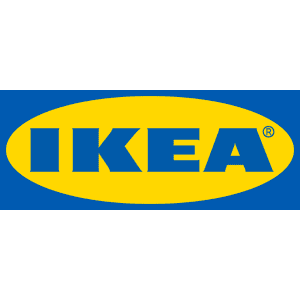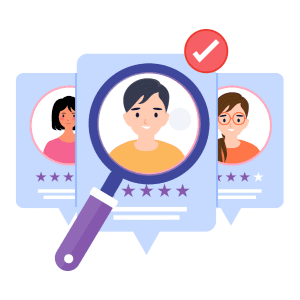As most of us know, the concept of workplace diversity has become more than just a buzzword. It’s a crucial element for success and innovation. Today, it’s clear that diverse workplaces are not just ethically important but also bring substantial benefits to organizations. It has become a core identifier of company culture.
This blog post looks at what workplace diversity entails and its significance. We also look at the practical steps that organizations can implement to foster a diverse and inclusive workplace.
What is Workplace Diversity?

The Importance of Embracing Diversity
While some diversity can be seen as performative, there are actually lots of reasons to support diversity in the workplace.
Enhanced Creativity and Innovation:
Diverse teams bring a plethora of perspectives, leading to innovative solutions and creative approaches to problem-solving. In a rapidly evolving business landscape, these diverse insights are invaluable.
Improved Employee Performance:
When employees feel valued and included, they are more engaged and perform better. Workplace diversity guarantees that we hear all voices, fostering an environment of respect and collaboration.
Broader Market Understanding:
A diverse workforce can better understand and connect with varied customer bases, which is crucial in today’s global market.
Attracting and Retaining Top Talent:

Barriers to Workplace Diversity
Despite the apparent benefits, achieving workplace diversity can be challenging. Unconscious biases, lack of awareness, and resistance to change are common obstacles. Organizations must recognize and actively address these barriers to create a truly inclusive environment. Below, we will look at steps organizations can take to overcome these barriers, and ultimately improve workplace diversity.
Case Study: IKEA U.S.
IKEA, the world-renowned furniture retailer, has long been committed to promoting equity, diversity, and inclusion (ED&I). IKEA U.S. wanted to do more in terms of diversity and inclusion. They set goals to improve race and ethnicity representation and increase diversity in leadership positions.

This initiative involved several key steps:
Interviews and Surveys:
IKEA U.S. conducted interviews and surveys across different departments, including communications staff, to understand how ED&I values were embedded in their strategies. The company collected information from leaders and workers. They wanted to evaluate the current state of diversity and inclusion. They also wanted to evaluate their objectives for the company.
Maturity Model Assessment:
Accenture utilized a maturity model to measure the extent to which ED&I was embedded within IKEA U.S., identifying opportunities for improvement.
Roadmap Development:
The findings from the maturity assessment were translated into a vision to guide action and several ED&I strategies. To achieve this, more diverse groups were added to all levels of the company. These strategies were also incorporated into IKEA U.S.’s 2023 plan.
Implementation and Tracking:
After evaluating, IKEA U.S. requested store leaders to introduce ED&I initiatives that match the new vision and strategies. The CEO formed an Equity Council and a pilot program for diverse talent with leadership training and mentorship. Furthermore, IKEA U.S. developed a dashboard to track ED&I indicators at stores. This allowed for progress reports to be shared with executives.
This case study shows us a comprehensive approach to advancing workplace diversity. It demonstrates the importance of a clear vision, thorough assessment, strategic planning, and effective implementation. It shows how organizations can take specific actions to set diversity goals and track their progress. This helps ensure that these goals are part of the overall business strategy.
Strategies for Fostering Workplace Diversity in 2024
Inclusive Recruitment Practices:

Comprehensive Training Programs:
Regular training on diversity, inclusion, and cultural competence is essential. This training should be updated continually to reflect the evolving nature of workplace diversity.
Creating Employee Resource Groups (ERGs):
Employee Resource Groups (ERGs) are voluntary, employee-led groups that aim to foster a diverse, inclusive workplace aligned with the organizational mission, values, goals, business practices, and objectives. Common types of ERGs that help with workplace diversity include:
Cultural or Ethnic ERGs:
If your workplace is ethnically diverse, you might want to consider a cultural or ethnic ERG. These groups support employees from various cultural, ethnic, or national backgrounds. Examples include:
- African-American/Black Employee Network
- Asian/Pacific Islander Employee Group
- Hispanic/Latino Employee Network
- Indigenous/Native American Employee Group
Gender Equality ERGs:
Focus on issues related to gender equality in the workplace. They may be gender-specific or encompass all genders. Examples include:
- Women’s Leadership Network
- Men as Allies for Gender Equality
LGBTQ+ ERGs:
Provide support for lesbian, gay, bisexual, transgender, and queer/questioning employees. They often work on issues of workplace equality, visibility, and advocacy. Examples include:
- LGBTQ+ Employee Alliance
- Pride Network
Disability Inclusion ERGs:
These groups support employees with disabilities and promote accessibility, awareness, and accommodation in the workplace. Examples include:
- Disability Advocacy Network
- Accessible Workplace Group
Generational ERGs:
Address the interests and challenges of different age groups within the organization. Examples include:
- Young Professionals Network
- Veterans Group
Parents and Caregivers ERGs:
Support employees who are balancing work with parenting or caregiving responsibilities. Examples include:
- Working Parents Network
- Caregivers Support Group
Health and Wellness ERGs:

- Mental Health Network
- Wellness and Fitness Group
ERGs support members and advise organizations on diversity and inclusion strategies. They help create a more inclusive environment where all employees can feel valued and empowered.
Implementing Inclusive Policies and Practices:
Policies should reflect a commitment to diversity and inclusion. This includes flexible working arrangements, fair pay practices, and a zero-tolerance policy towards discrimination and harassment.
Encouraging Open Dialogue:
Creating channels for open communication where employees can express concerns and ideas is vital for an inclusive environment.
Leadership Commitment and Accountability:
Leaders must be visibly committed to diversity and held accountable for making progress in this area. This includes setting clear diversity goals and measuring progress.
The Role of Technology in Enhancing Workplace Diversity

Workplace diversity is not just a moral imperative; it’s a business necessity. As we progress in 2024, it is clear that organizations that embrace and celebrate diversity will be the ones leading the way in innovation, employee satisfaction, and market relevance. By implementing the strategies outlined above, businesses can ensure that they are not only diverse in composition but truly inclusive in practice.
We encourage businesses to take proactive steps towards becoming a diverse company. Improve policies, involve employees, and use technology to make a diverse workplace that represents the world. Together, we can build a more inclusive, productive, and innovative future.





